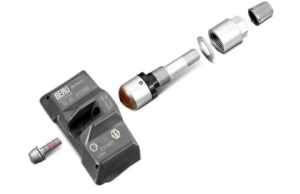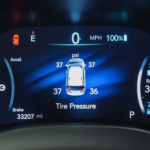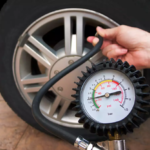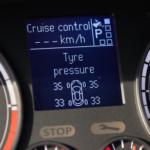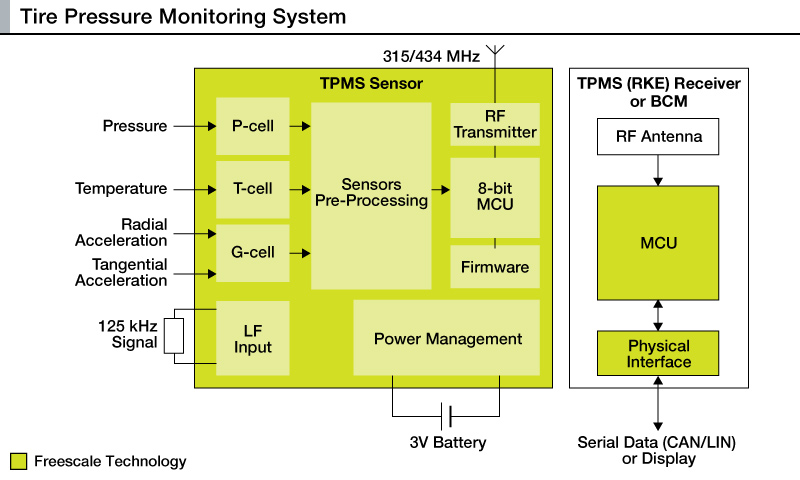Sensor-based monitoring systems for tire pressure can warn of potential problems, but there’s much more to the story than just a pressure-measurement system.
Once the decision was made to use the direct measurement technique, IC vendors developed the needed components and equally important packaging.
A TMPS requires a significant amount of analog, digital, and RF circuitry for both sensor-side transmitter and auto-body receiver (Figure 1 and Figure 2).
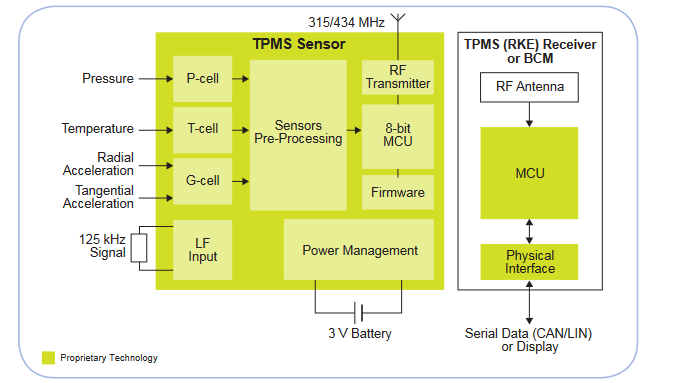
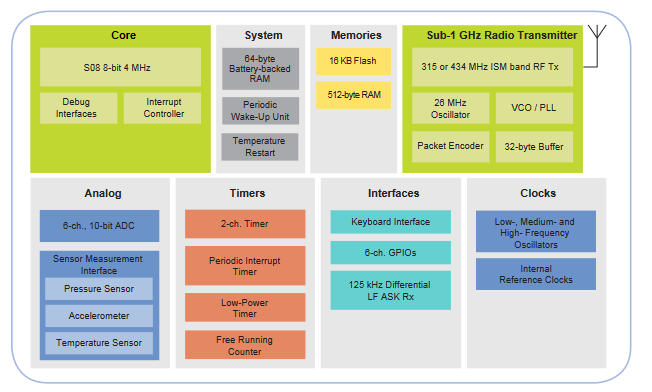
In this particular implementation from NXP (model FXTH87E), the internal 315/434 MHz RF transmitter in the tire includes an RF module (RFM) with crystal oscillator, voltage-controlled oscillator (VCO), fractal-n phase locked loop (PLL), and RF output amplifier (PA) for an antenna. It also contains a small state machine controller, random time generator, and hardware data buffer for automated output or direct control from the MCU. Each tire is fitted internally with a capacitive-based pressure sensor, accelerometers to provide data to compensate for centrifugal and other forces, A/D converter, microprocessor, RF link, and coin cell,
Typical power consumption of this TPMS is 5 mA at 434 MHz for a 5 dBm (dBmW) output and only 180 nA in sleep mode, critical to long battery life, of course. The TPMS is designed to “wake up” approximately every 20 minutes to report the measured pressure (the designer can modify that interval); the transmission is repeated several times in case of a data “collision” among the tires as they wirelessly report.
Due to the harsh operating environment conditions, the entire unit is potted as a single, solid module and becomes part of the tire air-valve stem assembly (Figure 3).

Each tire (and often, the spare tire as well) is equipped with its TPMS sensor/transmitter function to directly measure and report its pressure periodically via either 315 MHz or 433 MHz link (depending on the TPMS vendor) to a receiver unit in the car. The car, in turn, determines if the pressure is in the danger area of 25% or more below the nominal value; if there’s a problem, the driver is signaled by that console indication.
The final part of this article looks at some issues and challenges associated with TPMS designs.
EE World related content
EEPROM-configurable IC enables easier development of TPMS modules
Smart Tires Pave the Road for Future of Autonomous Cars
When tire pressure monitoring gets smart
Miniature transponder coils target uses in tire pressure monitoring
References
TPMS Background and History
- Schrader TPMS Solutions, “Schrader History”
- CarID, “What Is The History Of Tire Pressure Monitoring Systems?”
- Gregg’s Automotive, “The Story Behind Tire Pressure Monitoring System (TPMS)”
- TMPS Direct, “A Brief History of TPMS”
- Wikipedia, “Firestone and Ford tire controversy”
TPMS Operation
- Tirebuyer, “What is TPMS (Tire Pressure Monitoring System)?”
- Wikipedia, “Tire-pressure monitoring system”
- Inertion, “The Better Way to Fill Your Tires”
- TiresPlus, “Tire Pressure Monitoring System (TPMS)”
- TMPS Direct, “TPMS Sensor Batteries”
- Priority Tire, “TPMS 101: What Is it and How it Works?”
- Car and Driver, “A Tire-Pressure Sensor Can Save You From Having a Blowout”
- How Stuff Works, “How Tire Pressure Monitoring Systems Work”
- Mechanic Base, “How to Reset Tire Pressure Light (TPMS) – By Car Model”
- Autel, “MaxiTPMS TS401”
- Subaru 2010, “How much does change in tire pressure affect tire circumference?”
TPMS ICs and Components
- Melexis, “World’s smallest TPMS solution”
- NXP, “Tire Pressure Monitoring Sensors”
- NXP, “TPMS Selector Guide”
- NXP, “A Global Solution for Tire Pressure Monitoring Systems”
- Infineon, “Tire Pressure Sensor (TPMS)”
- Infineon, “SP400-11-11 Automotive Tire Pressure Monitoring Sensor”
- Infineon, “SP40PLUS Tire Pressure Monitoring Sensor”

